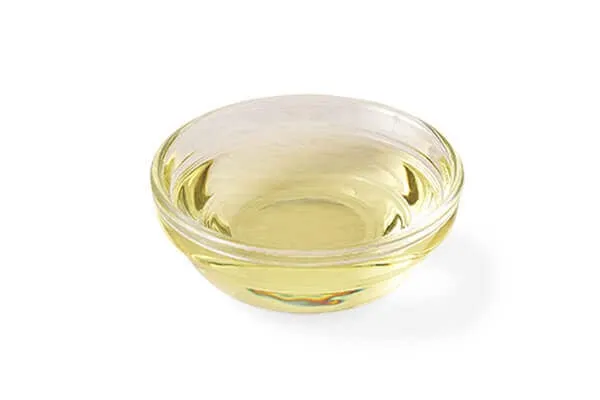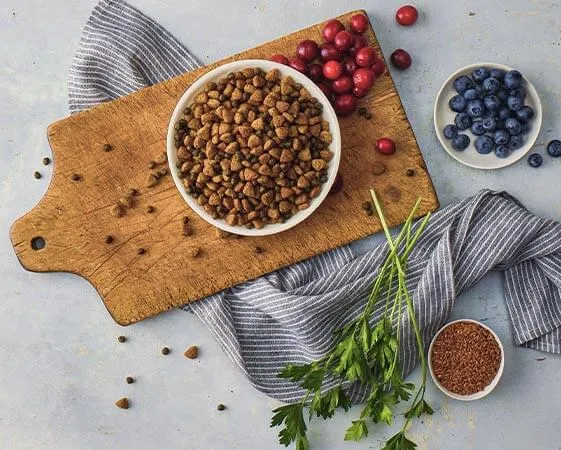A dog’s lustrous coat and healthy skin are often outward indicators of their overall well-being. Just like humans, a dog’s diet plays a crucial role in maintaining these vital aspects of their health. When you observe a dull coat, flaky skin, or excessive scratching, the solution often begins with a closer look at what’s in their food bowl. Choosing the right Dog Food Good For Skin And Coat can transform your canine companion’s appearance and comfort, providing them with essential nutrients that nourish from the inside out.
Essential Nutrients for a Thriving Skin and Coat
A healthy skin barrier and a shiny coat depend on a balanced intake of specific macronutrients and micronutrients. Understanding these key components will help you identify quality dog food.
Omega-3 and Omega-6 Fatty Acids
These essential fatty acids are paramount for skin and coat health. Omega-3s (like EPA and DHA, commonly found in fish oil) are known for their anti-inflammatory properties, which can soothe irritated skin and reduce itching. Omega-6s (found in ingredients like chicken fat and flaxseed) contribute to skin barrier function and coat luster. A proper balance between these two is crucial for optimal results.
High-Quality Protein
Protein is the building block for skin and hair. A dog’s coat is primarily made of protein, so a deficiency can lead to brittle hair and slow growth. Look for dog foods that list a high-quality animal protein source (like salmon, chicken, or lamb) as the first ingredient. Salmon, for instance, not only provides excellent protein but also naturally contains beneficial omega-3s.
Vitamins and Minerals
A range of vitamins and minerals supports skin and coat health:
- Vitamin E: A powerful antioxidant that protects skin cells from damage and promotes healthy skin.
- Vitamin C: Supports collagen production and has antioxidant benefits.
- Zinc: Essential for cell division, protein synthesis, and immune function, all of which are critical for skin repair and hair growth.
- B Vitamins (especially Biotin): Play a role in cellular metabolism and can contribute to a strong, healthy coat.
Key Ingredients to Look For in Dog Food for Skin and Coat Health
When evaluating different dog food brands, specific ingredients stand out for their proven benefits. Many premium formulas, often developed by veterinarians and PhD animal nutritionists, incorporate these elements to deliver optimal results.
Salmon and Salmon Meal
Salmon is an exceptional primary protein source that also delivers a rich supply of omega-3 fatty acids, particularly EPA and DHA. Salmon meal, a concentrated form of salmon protein, offers similar benefits. These ingredients are often featured in formulas specifically designed to promote healthy skin and a shiny coat.
 Dog food kibble with salmon
Dog food kibble with salmon
Fish Oil and Flaxseed
These are concentrated sources of beneficial fatty acids. Fish oil is abundant in omega-3s, helping to reduce inflammation and support the skin’s natural barrier. Flaxseed provides both omega-3s and dietary fiber, which aids digestion and contributes to a healthy coat. Together, they form a powerful duo for canine dermatological health.
 Bowl of fish oil for dogs
Bowl of fish oil for dogs
Brown Rice and Oatmeal
These whole grains are excellent sources of complex carbohydrates for sustained energy and fiber for digestive health. Furthermore, oatmeal is rich in B vitamins, which support healthy skin and hair. For dogs with sensitivities, these wholesome grains are often preferred over corn or wheat.
Pumpkin and Cranberries
Beyond their fiber content, pumpkin and cranberries offer a wealth of vitamins, minerals, and antioxidants. Pumpkin assists in healthy digestion, while cranberries provide vitamins C, E, and K, along with manganese, which contribute to overall immune health and oxidative balance.
The Role of Antioxidants and Specialized Formulas
Many high-quality dog foods, including those specifically formulated for skin and coat health, incorporate antioxidant-rich blends. These blends, sometimes called “LifeSource Bits” or similar proprietary names, are a precise mix of antioxidants, vitamins, and minerals. They are often cold-formed to retain the potency of their ingredients, helping to support the immune system, meet life stage requirements, and maintain healthy oxidative balance. This holistic approach helps protect cells from damage and supports the body’s natural healing processes, which is vital for skin regeneration.
 LifeSource Bits kibble
LifeSource Bits kibble
What to Avoid: The “True BLUE Promise” and Beyond
Just as important as what goes into your dog’s food is what’s left out. Many brands committed to pet health emphasize a “True Promise” of natural ingredients, avoiding common irritants and fillers. When searching for dog food good for skin and coat, look for formulas that explicitly state:
- Real meat as the first ingredient: This ensures a primary source of high-quality protein.
- NO chicken (or poultry) by-product meals: These are often lower quality and less digestible forms of protein.
- NO corn, wheat, or soy: These are common allergens and fillers that can sometimes trigger skin sensitivities in dogs.
- NO artificial flavors or preservatives: Natural preservation and flavoring are always preferable for your dog’s long-term health.
Considering specialized diets is also crucial if your dog has other health concerns. For example, if you’re looking for best dog food for maltese puppy, you’d consider breed-specific needs alongside skin and coat support. Similarly, for older dogs or those with dental issues, exploring best food for dogs with bad teeth might be necessary, ensuring the texture and ingredients are appropriate while still addressing coat health.
Selecting the Right Food and Feeding Guidelines
Choosing the right dog food good for skin and coat requires careful consideration. Always read ingredient labels and look for products that meet the nutritional levels established by organizations like the AAFCO (Association of American Feed Control Officials) for your dog’s specific life stage (adult, puppy, senior).
Once you’ve selected a new food, it’s important to transition your dog gradually to avoid digestive upset. Start by mixing a small percentage of the new food with their old food and slowly increase the amount over 7-14 days. Always provide access to clean, fresh water.
Individual dog’s requirements can vary based on age, breed, environment, and activity level. Pay close attention to the feeding guidelines provided on the packaging and adjust as needed to maintain optimal body condition. If you’re unsure, or if your dog’s skin and coat issues persist despite dietary changes, always consult your veterinarian. They can rule out underlying medical conditions or recommend specific supplements or effective spot-on flea treatments if parasites are the cause. Sometimes, even natural flea solutions can provide temporary relief while you identify the root cause.
Conclusion
Nourishing your dog’s skin and coat begins with a high-quality, balanced diet. By focusing on foods rich in omega-3 and omega-6 fatty acids, premium proteins, and essential vitamins and minerals, you can significantly improve their dermatological health and achieve that coveted shiny coat. Always prioritize products formulated by veterinary experts and avoid common fillers and artificial ingredients. Remember that consistent observation and veterinary consultation are key to addressing any persistent skin or coat concerns. Invest in their nutrition, and watch your dog thrive with a healthy, beautiful coat.
References
- Association of American Feed Control Officials (AAFCO). (Current). Official Publication.
- Specific product information from veterinarian and animal nutritionist formulated dog food brands.
